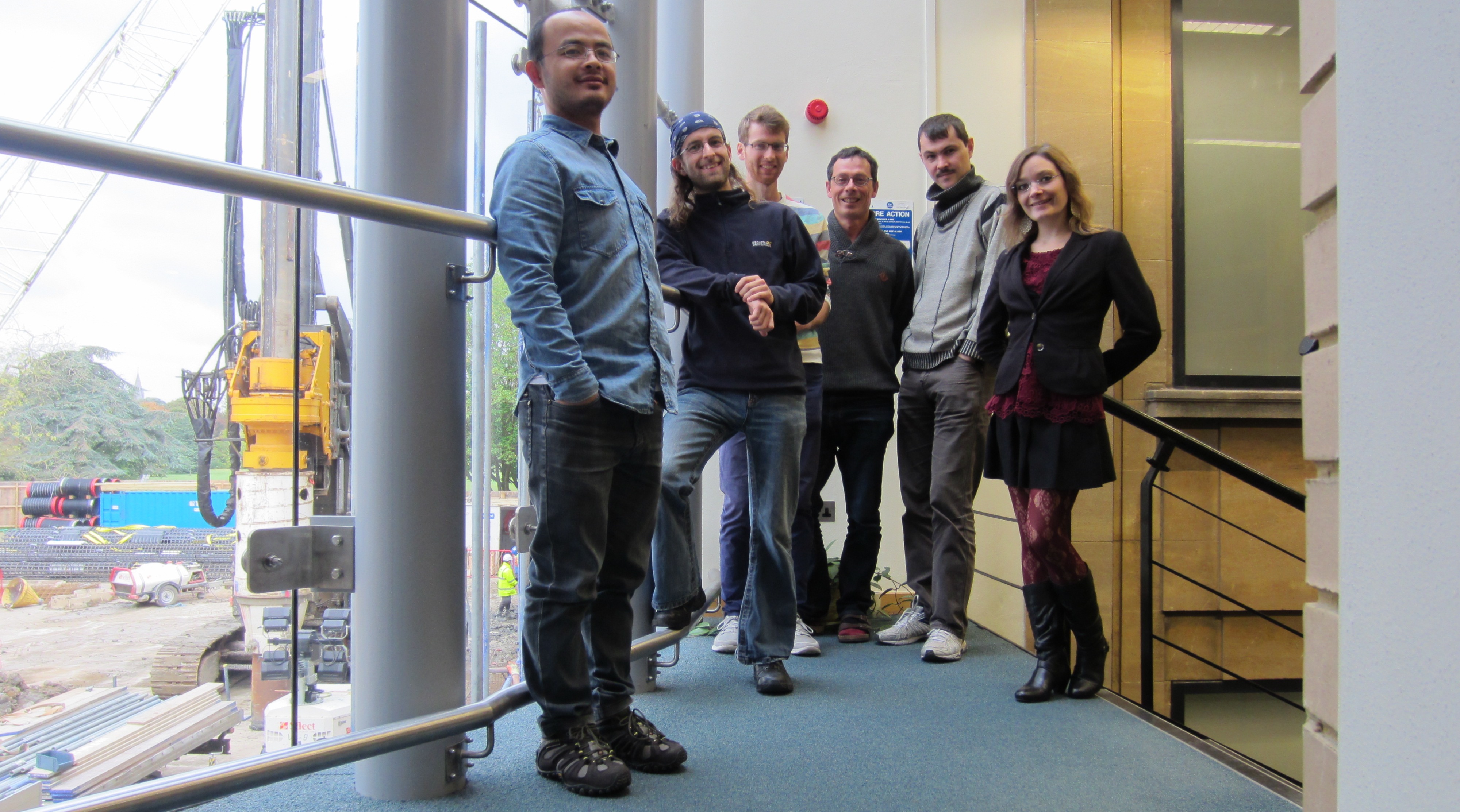|
|

Potential graduate students should look here or here.
We are currently working on Rotary Molecular Motors. In particular the Bacterial Flagellar Motor and F1FO ATP-synthase. The aim is to try and understand how these living machines work.
We use a range of techniques. Molecular motors are tens of nanometres in size, and we measure their motion using novel forms of light microscopy to follow visible "handles" such as sub-micron gold or polystyrene spheres and rods, and single fluorescent molecules. We measure the position of the handles with nanometre and sub-millisecond resolution using fluorescence microscopy, laser dark-field microscopy and laser interferometry. Optical tweezers (3-D laser traps) and magnetic tweezers are used to push single motors around. We also use single-molecule fluorescence microscopy to detect separate components of the motors and assess how they interact with each other. Recently, we have started trying to build bits of motors on engineered DNA nanostructures.
By measuring the torque generated by the motors under all sorts of different conditions, we aim to arrive at a model of how they work. We are also interested in how the motors are built and maintained in living cells, how they are controlled, and in the case of the flagellar motor, how they make bacteria swim.
More photos...
last updated: 18 June 2018